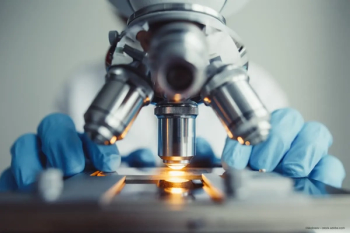
Q&A: I. Paul Singh on the travoprost intracameral implant in conjunction with cataract surgery
Inder Paul Singh, MD, discusses groundbreaking findings on the iDose implant's efficacy and safety in glaucoma management during cataract surgery.
Inder Paul Singh, MD, a glaucoma and anterior segment surgeon from Wisconsin, United States, shared insights into his clinical experience and recent research on the iDose implant combined with cataract surgery for glaucoma patients. In this conversation at the American Academy of Ophthalmology's 2025 meeting, he reviewed the procedure’s efficacy in reducing intraocular pressure (IOP), highlights significant safety outcomes observed during a 12-month study, and discusses the practical benefits for both surgeons and patients, emphasizing how the iDose allows for greater treatment confidence and improved glaucoma management in real-world settings.
Note: The following conversation has been lightly edited for clarity.
Ophthalmology Times Europe: What were the key findings regarding IOP reduction at 12 months following the administration of the travoprost intracameral implant during cataract surgery?
Inder Paul Singh, MD: I had the opportunity to present a paper that we are part of. I had the opportunity to also go-to Armenia a few years ago, to perform cataract surgery along with the iDose, which is intracameral implant that releases travoprost proprietary oil to reduce the IOP. This is a combination cataract with the iDose. I think what's really unique to talk about is that the power of the reduction of IOP, as well as a percentage of patients who achieved a reduction. First of all, the unmedicated baseline IOP was around 25 millimeters of mercury. Then, after 12-month follow up, we found average pressures or reduction of about 11 millimeters of mercury reduction; 98% of patients had a 20% or greater reduction of IOP from baseline, and over 96% of patients had a pressure of 18 or less. What I think is really fascinating, not only number 1, is it powerful to get 11 millimeters of mercury reduction from cataract baseline, no one at 1 year had added was on more than one drop. Majority of patients were off of medications, and we also found no CME. From a safety perspective, we didn't see any increased level of inflammation, CME, significant power to reduce the IOP. But I think what's important is the percentage of patients who achieve the reduction of IOP was really important, because when we look at our kind of concern, when we go into cataracts or to do any kind of glaucoma procedure, whether it's procedural, pharmaceutical, or MIGS, we're always wondering, "Am I going to get the reduction I want?" "What is the responder rate?" We have really good success, and we have good confidence with topical travoprost, so we should have the same confidence intracamerally, but to show it now with cataract surgery, I think was really important. Bottom line: 25 down, 11 points down, almost 100%, so 96% of patients had a pressure of less than 18 with no CME or other chronic inflammatory issues.
OTE: How did the safety profile of the iDose TR implant evolve over the 12-month period, and were there any notable adverse events or complications?
Singh: I think that's the key. Is making sure we don't have any increased adverse event profiles. Things that people worry about with any prostaglandin in the eye the time of surgeries, "Am I going to have inflammation? Am I going to have any issue of CME?" We did not see any clinically significant CME over the course of that 12-month study, and no chronic inflammation. [It was] a normal, tapering dose of steroids, as per the routine cataract surgery for that location. I think we can feel confident that if we do a cataract surgery with an iDose, we'd have the same post-op outcomes and post-op course that we expect with cataract surgery alone.
OTE: Based on the 12-month outcomes, what implications do these results have for the future use of intracameral drug delivery systems in glaucoma management, particularly in combination with cataract surgery?
Singh: I think what this study for me was really highlighted was the power of drug delivery, or procedural pharmaceuticals along with cataract surgery. We know that cataract surgery gives us 5 millimeters of mercury in different studies, or 4 to 5, but to get 11, that's actually because of the travoprost, iDose. Not only is it powerful, it's maintained high safety along with cataract surgery. I think we feel comfortable going into cataract surgery, if we want that reduction of IOP, and having the confidence that it's going to get us to where we want you to be. That's the positive outcome. I think that a lot of surgeons want, is to know that I'm going to get that reduction. I think the procedure itself is also very efficient, and the learning curve is very low and very quick, rather, because it's not something like to cannulate into the canal, it's going through the canal into the scleral wall, so you have a larger landing zone. I think more doctors who are uncomfortable with MIGs are going to feel more comfortable performing this procedure. The best part is, it can be combined with your MIGs of choice. This is a procedural pharmaceutical, not a MIGS procedure, so you could do your stenting or your canal dilation or goniotomy, and also place this iDose at the same time. The power we can get and with cataract, to reduce the IOP is truly, truly significant, maintained that high safety. I think this is going to help a lot of doctors who are on the sidelines feel more comfortable offering this kind of option for those patients.
Newsletter
Get the essential updates shaping the future of pharma manufacturing and compliance—subscribe today to Pharmaceutical Technology and never miss a breakthrough.













































